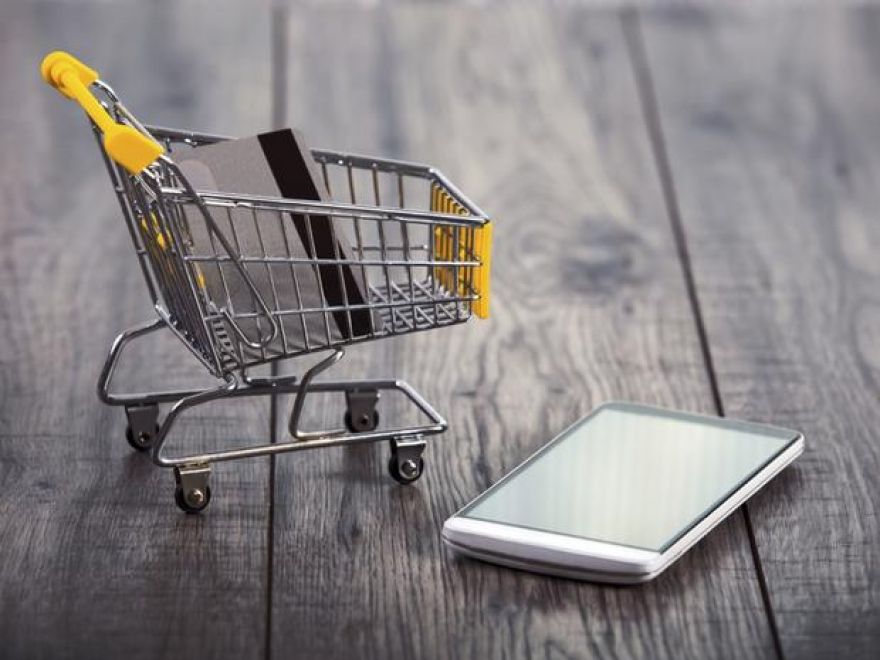
Retail is fast becoming an app-eat-app world
Apps consume 90% of our smartphone time. They're also increasingly consuming our bank balances.
According to new shopping data from Criteo, mobile phones are displacing desktops as the digital shopping medium of choice. They're also increasingly taking the place of physical visits to stores—according to the National Retail Federation, more shoppers polled went online (103 million) than to stores (102 million) over the Thanksgiving/Black Friday weekend.
But, as much as we used to look to mobile web as a way to drive prospective shoppers into a purchase, apps are proving to be even more potent, according to this same data.
Now, if only the US would catch up with more advanced mobile economies.
Goodbye desktop!
Today, apps convert better than desktop web experiences, according to the Criteo data.
And though venture capitalist Fred Wilson once persuasively argued that mobile web feeds top of the funnel leads, with apps closing on the most committed customers of a brand, the Criteo data suggests otherwise. In fact, apps deliver far better results than mobile web at every phase of the mobile shopping experience:
Not only do mobile app consumers buy more often with apps, they also spend more on average ($102 per transaction) than they do on mobile web ($92) or desktop web ($100).
Not that apps are the only story in e-commerce.
After all, 37% of people who buy on desktop devices actually used multiple devices (desktop, smartphone, tablet) before pushing the buy button on their desktops. This is also true of those who complete a purchase on a smartphone (35%) or tablet (43%). In other words, even when people buy on their smartphones, it's still important to deliver a solid experience on other devices, too.
Though mobile influences desktop purchases, with nearly 40% cross-device desktop purchases coming after shoppers first browsed a retailer's mobile website, the same is decreasingly true of mobile purchases. For those who buy on their mobile devices, a majority (51%) never used their desktop en route to a purchase.
At least, outside the US.
The U.S. lags in the mobile retail revolution
Though we in the US may blankly stare at our phones as much or more than citizens of other countries, we don't use them to buy things nearly as much as people in other countries do.
Some areas of the US retail economy are doing better than others. As uncovered in the Criteo data, retailers that have invested heavily in building out a strong mobile shopping experience are seeing transactions at rough parity with desktop in 2015. Hence, while mobile hit 30% of Q4 2015 transactions, up from 27% in 2014, top-quartile retailers increased mobile's share of all transactions even faster—from 35% to 44%.
In short, while the US lags behind its peers in Japan, the UK, and South Korea, among other nations, its most advanced mobile retailers are keeping pace. This is very much a problem for retailers to solve: 92% of millennials and 67% of those over the age of 70 consider the smartphone their device of choice, according to ADI data. This same survey data indicates that over 50% of respondents were not satisfied with their mobile retail experience.
So, there's a lot of work to do to help nudge app and web browser users into buyers. But, as the Criteo data seems to suggest, it's a matter of retailers investing properly, and not a lack of consumer interest.
Stay up to date on the changing mobile world, subscribe to our Mobile Revolution newsletter.
Also see
- Why your company should start thinking about mobile commerce right now (TechRepublic)
- Brazilians become more confident about m-commerce (ZDNet)
- Predictions for a massive 2016 in Mobility (TechRepublic)
- On the cusp of the next wave of mobile monetization (TechRepublic)
- Does there need to be an app for that? (TechRepublic)

